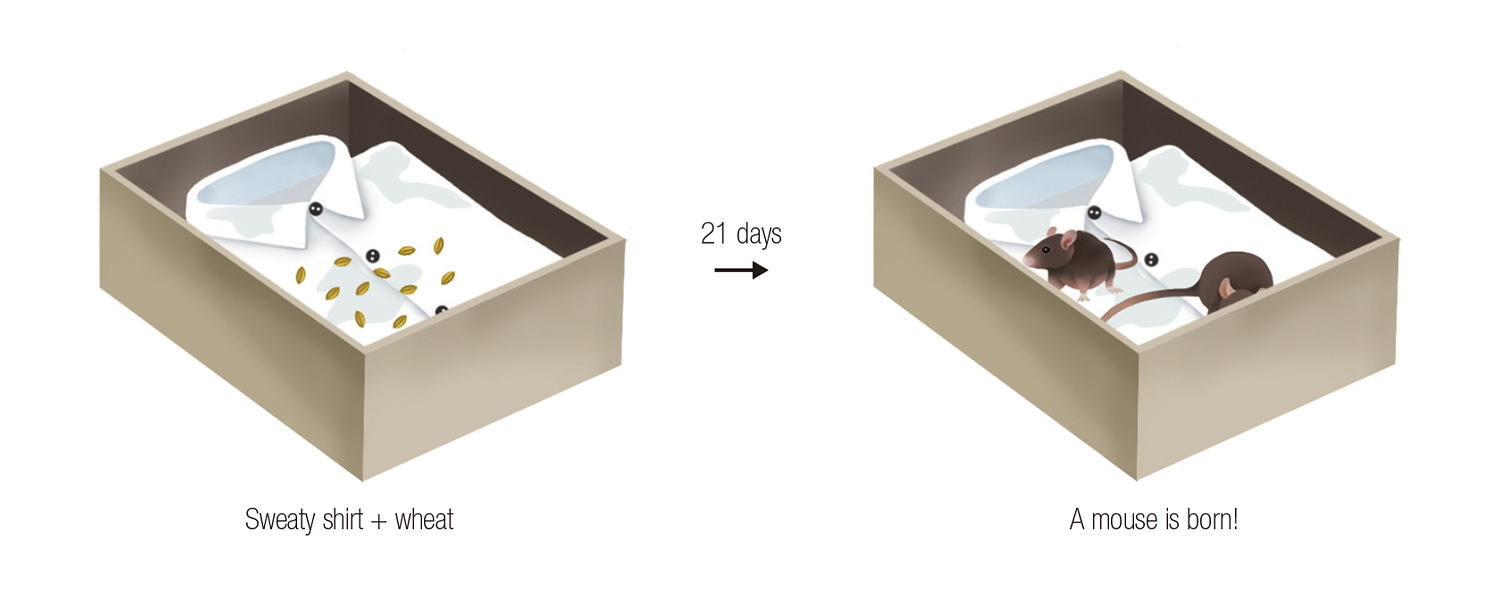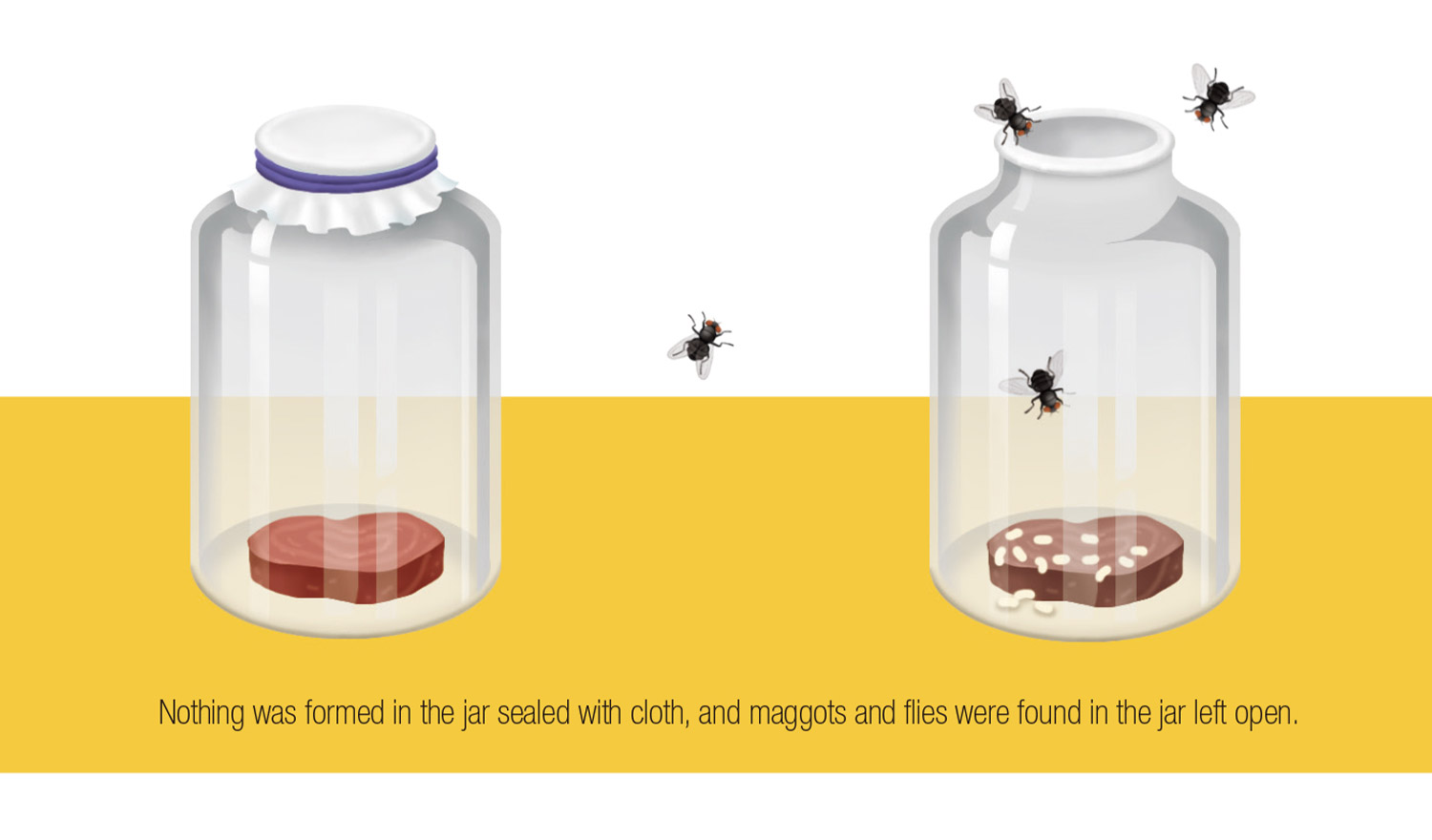There was a lonely girl who liked painting and whose only joy was observing insects. The girl found a solid object on a tree branch, which looked like a stone or a seed. She observed the changes of that object for the whole season and drew them. When the spring came, the object flew away into the sky with light wings. It was a pupa that molted and became a butterfly. This girl who observed the magic-like metamorphosis for the first time was Merian, a German painter and the first female entomologist of the 17th century.

Now we know that a gross-looking caterpillar that comes from an egg will turn into a beautiful butterfly in a little while, but people didn’t know that up until a few hundred years ago. People regarded caterpillars as the “fruits of the devil” from the dirty trash, and butterflies as small birds that fall from the sky in spring and disappear in fall. They regarded eggs, caterpillars, pupae, and butterflies as different creatures from each other. Back then, it was impossible even to imagine that a caterpillar that was crawling up until moments ago would change into a butterfly and fly in the sky.
Beginning of spontaneous generation
Spontaneous generation is a hypothesis that living creatures can arise by themselves without parents. This hypothesis was made by Aristotle, an ancient Greek philosopher, based on the then philosophical doctrines and ancient myths; he got his evidence from fleas emerging from the dust and maggots forming around rotten meat. Furthermore, he claimed that not only invertebrates but also some upper vertebrates naturally arise, and one of the examples he took was eels. Since no reproductive organs had been found in eels nor could young eels be found, they assumed that eels arise spontaneously in the mud.
Eels live in fresh water, but go out to the ocean where they were born when the breeding season comes. When this happens, their digestive organs atrophy and their reproductive organs develop. Eels are known to spawn in the deep sea. The egg of an eel goes through its larval stage with the name leptocephalus and goes back to the river after being transformed into an elver. Because Aristotle didn’t know the unique life cycle of the eel, he only observed the adult eels and made a wrong conclusion that they arise spontaneously.
Aristotle’s view that living creatures could arise from nonliving matter that exists in the natural world was accepted as established theory even to the modern times, and many people thought that living creatures arise from water or soil. Today, it sounds like nonsense, but back then, even prominent scholars believed the spontaneous generation. Here is one of the good examples. In the early 17th century, Helmont, a Belgian chemist, left the record of his experiment as the evidence of the spontaneous generation, where he placed a sweaty shirt together with some wheat and mice were allegedly born 21 days later.
Helmont’s experiment supporting the theory of spontaneous generation

Spontaneous generation vs. biogenesis
In the mid-17th century, Redi, an Italian physician, carried out an experiment that denied the spontaneous generation for the first time. He refuted the spontaneous generation, on the basis of the hypothesis of William Harvey, a physician famous for his blood circulation theory, who wrote in his book Exercitationes de Generatione Animalium, “Insects, earthworms, and frogs do not arise spontaneously, but from eggs that are too small to see.” Redi put a loaf of meat in two jars: one covered with cloth and the other left open. As a result, nothing happened to the meat in the jar covered with cloth, but maggots and flies were found in the jar left open. Based on this, Redi announced the biogenesis, which suggests that living creatures only come from living creatures, and the theory of spontaneous generation was pushed aside.
Redi’s experiment that announced biogenesis

However, the theory of spontaneous generation gains strength back by Leeuwenhoek, who discovered microorganisms by using a microscope for the first time. It is because he found a microorganism in a sealed jar containing a chunk of meat. The theory of spontaneous generation did not disappear until the 18th century. The English biologist Needham discovered microorganisms in an experiment where he put boiled meat juice in a flask, sealed it, and then sterilized it again by putting it in hot ash. He insisted that “simple living creatures like microorganisms can arise spontaneously,” and his insistence triggered a dispute again.
The Italian biologist Spallanzani later objected to Needham’s insistence. Suggesting that the sterilization might not have been done properly in Needham’s experiment or that it might have been contaminated while sealing the flask, he proved that microorganisms did not arise when boiling a completely sealed flask with meat juice in it, through repeated experiments. But then Needham refuted his insistence, saying, “The excessive heating destroyed not only the microorganisms but even growth energy,” and “It is natural that life cannot grow if the air is cut off”; the two conflicted sharply.
End of argument
The one who put an end to the fierce argument and made the theory of spontaneous generation submit in the 19th century is Pasteur. Assuming that the microorganisms in the dust in the air enter the food and breed, he proposed a simple yet brilliant experiment. In an experiment called Swan Neck Flask Experiment, he heated the neck of the flask containing yeast and sugar solution, and made it long and thin in an S shape. Then he sterilized it by boiling the solution in the swan neck flask, and left the air to freely move through the neck of the flask.
Pasteur’s swan neck flask experiment

The results were astonishing. Unlike ordinary flasks, no microorganisms were found in swan neck flasks. It was due to the unique shape of the swan neck flask which allows the air to freely move but blocks dust from entering because of the stagnant water. When he broke the neck of the swan neck flask, he could confirm that microorganisms grew in the liquid yeast a few days later. Through this experiment, Pasteur refuted the theory of spontaneous generation by showing that microorganisms do not always breed although air goes in and out, and proved that microorganisms can arise when there are other microorganisms.
With the publication of Pasteur’s thesis, the theory of spontaneous generation disappeared without a trace, and it confirmed biogenesis which means there have to be parents that have life for a living creature to arise.
It has been proved recently by the development of science, and it is an unchangeable principle that living creatures never arise spontaneously. Life only comes from life, and the living creature that is born resembles the traits of its parents. The course of life from the parent to the child still continues to this day. When we trace back the course of life, what being is there at the beginning?
Now Jesus himself was about thirty years old when he began his ministry. He was the son, so it was thought, of Joseph, the son of Heli, the son of Matthat . . . the son of David . . . the son of Judah, the son of Jacob, the son of Isaac, the son of Abraham . . . the son of Shem, the son of Noah, the son of Lamech, the son of Methuselah, the son of Enoch . . . the son of Enosh, the son of Seth, the son of Adam, the son of God. Lk 3:23–38
- Reference
- Lee Jong-ho, Geniuses Who Beat Geniuses 1 (in Korean, 천재를 이긴 천재들 1), Geulhangari, 2007
- Kim Du-sik and Lee Hee-bong, Modern Understanding of Life Science (in Korean, 생명과학의 현대적 이해), Yonsei Univ. Press, 1990
- Gu Ja-hyeon, Pasteur’s Swan Neck Flask Experiment (in Korean, 파스퇴르의 백조목 플라스크 실험), Science Donga, August, 2005